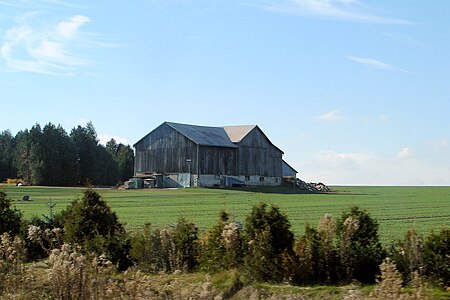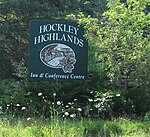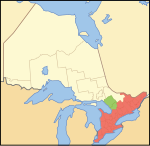Mono, Ontario

Mono is a town situated in south-central Ontario, Canada, at the south-east corner of Dufferin County. It stretches from Highway 9 along its southern border to Highway 89 along its northern border. Its border to the west is with the Township of Amaranth and in the east, it is bordered by the Township of Adjala-Tosorontio. It was previously known as the Township of Mono. Mono is a rural community in both geography and character. It has a wide variation in topography, being composed of mostly rolling, tree-covered hills. It holds many streams and creeks which form the headwaters of three rivers - the Humber River, Nottawasaga River and Credit River and most of the town is located on high land relative to the rest of Southern Ontario. This leads to its current slogan of 'the heart of the headwaters'. Mono's residents live on farms, rural estates, and in small settlements. Mono Centre, Hockley Village, and Camilla are just some of the small communities which exist within the Town of Mono. Mono's population represents many different backgrounds, including the farming community, local businesses, numerous artists and artisans, commuters to neighboring towns and cities, and weekend escapees from the urban bustle. The origins of the name is believed to be from Sir Peregrine Maitland from Spanish for monkey.
Excerpt from the Wikipedia article Mono, Ontario (License: CC BY-SA 3.0, Authors, Images).Mono, Ontario
Mono Centre Road,
Geographical coordinates (GPS) Address Nearby Places Show on map
Geographical coordinates (GPS)
| Latitude | Longitude |
|---|---|
| N 44.016666666667 ° | E -80.066666666667 ° |
Address
Mono Centre Road
Mono Centre Road
L9W 5Y2
Ontario, Canada
Open on Google Maps





